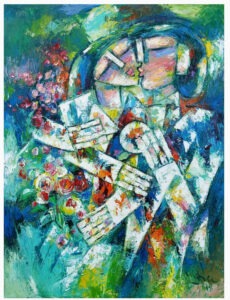Just hours before the iconic crimson steps of the Palais des Festivals are due to be unfurled, Cannes has dropped a sartorial shockwave. In a surprise move, the festival’s organisers have announced a formal ban on nudity—not just in spirit, but codified in writing. The updated charter now declares, “For decency reasons, nudity is prohibited on the red carpet, as well as in any other area of the festival.” It’s a ruling that arrives at the intersection of glamour, governance, and cultural whiplash. That it was handed down so close to curtain time is not just inconvenient; it’s symbolic.
At stake is more than a policy about skin. This is a battle over control: who has the right to define elegance, how far aesthetic freedom should go, and what it means when a supposedly avant-garde celebration of art chooses modesty over momentum. The Cannes Film Festival, long a global altar of cinematic provocation, is now seemingly caught in a moral tug-of-war. But beneath the headlines, the issue runs deeper than bare backs and sheer dresses. It’s about the fundamental tension between personal expression and institutional conservatism—played out, fittingly, on one of the world’s most watched stages.
Between Provocation and Prestige
For decades, Cannes has danced on the edge of couture and controversy. Its red carpet has been a pageant of risk-taking—brimming with plunging necklines, diaphanous fabrics, and sculptural provocations that blur the lines between fashion and protest. Think Bella Hadid in Schiaparelli’s lung-shaped gold breastplate, or Léa Seydoux in custom Louis Vuitton sheer silhouettes. These are not accidents. The nudity-adjacent aesthetic has become an unofficial Cannes tradition, one rooted in the cinematic spirit itself: the body, as screen, as symbol, as site of storytelling.
And yet now, the festival is drawing a line in the (figurative) sand. “Decency,” the charter claims. But whose? And when? The move reveals an age-old fissure that has only widened in recent years—the dissonance between the public image of Cannes as a beacon of liberated artistry, and the private bureaucracy that governs its appearances.
A representative told the Hollywood Reporter that these rules “have long been in effect,” merely reinforced by this formal update. But the question lingers: why codify it now, and why in such proximity to opening night? In an era when last-minute scandal control is as integral to brand strategy as the films themselves, it’s hard not to read this as reactive rather than reflective. And it’s even harder not to interpret it as a deliberate rebuke to the current wave of so-called “nude dressing”—a trend which, ironically, has never been about nudity in the literal sense, but about the simulation of vulnerability, the illusion of exposure.
The New Nude: Aesthetic Armor or Erotic Mirage?
The last five years have seen red carpet fashion take a distinct turn. Influenced by the transparency of social media, the boldness of post-#MeToo feminism, and the mainstreaming of queer aesthetics, a new breed of fashion emerged—one that leveraged sheer fabrics, body-con silhouettes, and illusionary designs to express control rather than submission. The naked dress became an emblem not of fragility, but of choice. To wear nearly nothing, after all, is not a cry for help—it’s a performance of power.
Designers like Mugler, Nensi Dojaka, LaQuan Smith, and Coperni have contributed to this aesthetic renaissance. So too have stylists who work with stars like Zendaya, Doja Cat, Hunter Schafer, and Anya Taylor-Joy. They’ve made fashion an exercise in skin-as-statement. Sheerness became a tool of modern sensuality: sometimes celebratory, sometimes confrontational, often political. Against this backdrop, the Cannes restriction doesn’t just feel conservative—it feels regressive.
One must wonder: who, exactly, is this rule intended to police?
Because, inevitably, it becomes a gendered discussion. Will a translucent shirt on a male actor spark the same institutional recoil as a backless gown on a female director? Will drag performers or non-binary guests be judged under an unwritten standard of traditional “male” and “female” dress codes? And what happens when what one culture deems indecent, another celebrates as art?
A Festival in Crisis—or a Festival in Transition?
Cannes, like most legacy institutions, is currently undergoing a quiet identity crisis. Once the unassailable capital of European cinema, its cultural cachet now contends with the democratizing rise of streaming, the viral velocity of TikTok discourse, and the rapid globalization of film criticism. Younger audiences are no longer satisfied with arthouse gatekeeping. They want fluidity, risk, and relevance. And they want the red carpet to match.
By drawing its moral boundaries at the hem of a sheer dress, Cannes may believe it’s protecting its dignity—but it risks misunderstanding the future. The modern red carpet is not a side attraction. It is a political arena, a media engine, and a symbolic expression of cinematic liberty. Censorship, no matter how softly spoken, resonates loudly in this context.
And yet, the festival’s decision also speaks to the lingering tension between Europe’s nostalgic codes of elegance and the internet’s postmodern embrace of transparency. Cannes isn’t merely resisting nudity; it’s resisting the aesthetic of discomfort that today’s fashion increasingly thrives on. But discomfort, as artists know, is often where the best stories live.
A Quiet Return to Policed Femininity?
Though the rule applies universally, its implications disproportionately affect female and femme-presenting guests—especially those whose ensembles often rely on cut-outs, sheers, and conceptual tailoring. It’s not hard to envision security parsing whether a dress reveals “too much side boob,” or if a slit reaches a “non-decent” altitude. The vagueness of enforcement is part of the danger. Without precise definitions, “decency” becomes an instrument of personal bias.
Historically, red carpet dress codes have veiled an implicit expectation of what femininity should look like: composed, elegant, non-threatening. When Kristen Stewart infamously removed her heels on the Cannes steps to protest the outdated stiletto requirement, she wasn’t just kicking off shoes—she was kicking down a norm. This latest update feels like another attempt to put the door back on the hinges.
Is the naked body—especially a woman’s—still viewed as inherently disruptive, even in the world of cinema, where vulnerability is supposed to be a tool, not a crime?
The Real Question: What Are We Afraid Of?
If nudity is banned in the name of “decency,” then we must ask: what exactly is being protected? Who feels threatened by the shimmer of a sheer fabric or the silhouette of a collarbone? In an industry that routinely profits from the cinematic undressing of the human form—emotionally, physically, spiritually—it is paradoxical to limit that same expression on the red carpet.
Art often lives in the tension between the private and the public. The Cannes red carpet, by its very nature, is performative. To walk it is to inhabit a role—sometimes larger than life, sometimes close to the bone. To reduce that performance to an institutional checklist of acceptable attire is not just a limitation of fabric. It is a limitation of imagination.
And perhaps that’s the most troubling subtext of all: that in an era where fashion has become an expressive language—where every outfit can speak across generations and geographies—the world’s most prestigious film festival has chosen silence over dialogue.
The Aftermath: Style as Protest
Even as the dust settles, it’s likely that designers and guests alike will find ways to respond—subtly or overtly. A gown that appears opaque under flash, but translucent in motion. A body stocking embroidered in defiant poetry. A garment stitched entirely from banned silhouettes. This is fashion’s true genius: its ability to say what policy cannot.
There will be questions. There will be contradictions. There will be backlash. But perhaps most importantly, there will be creativity. Because style, like cinema, thrives under pressure.
To attempt to regulate the body is to misunderstand it. The body, especially on the red carpet, is not merely anatomy—it is meaning. And to dress it is not to obscure it, but to speak through it.
No comments yet.








